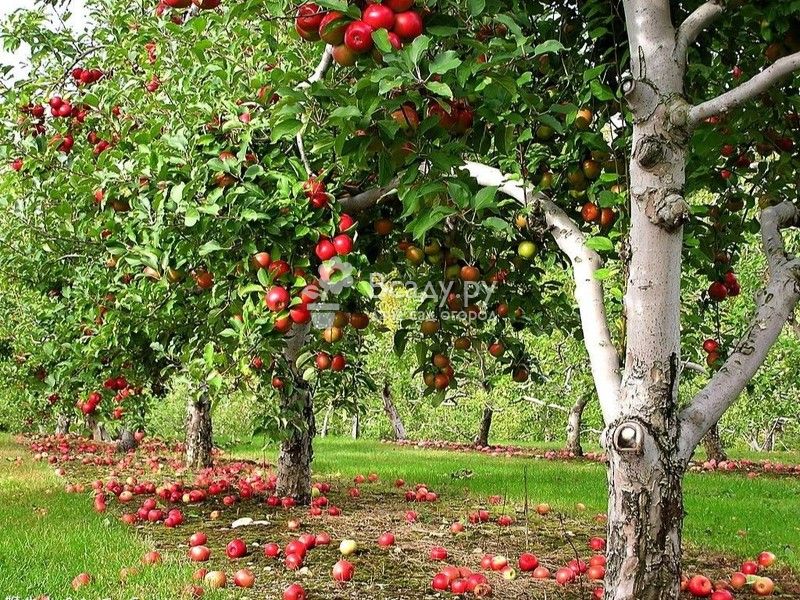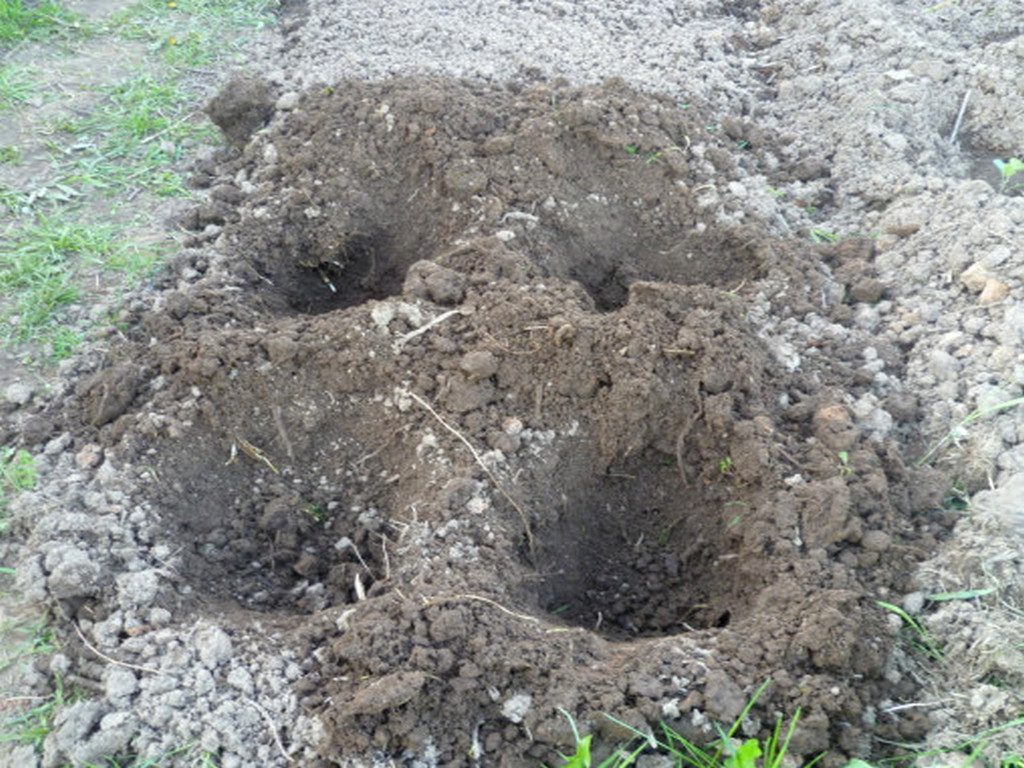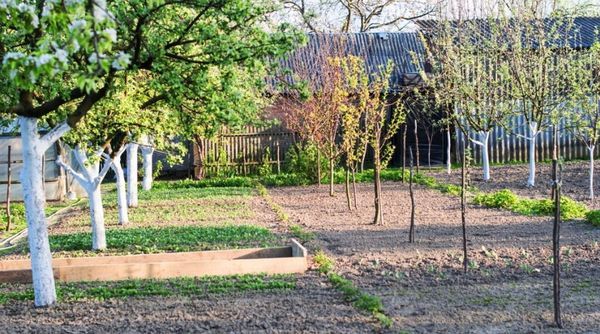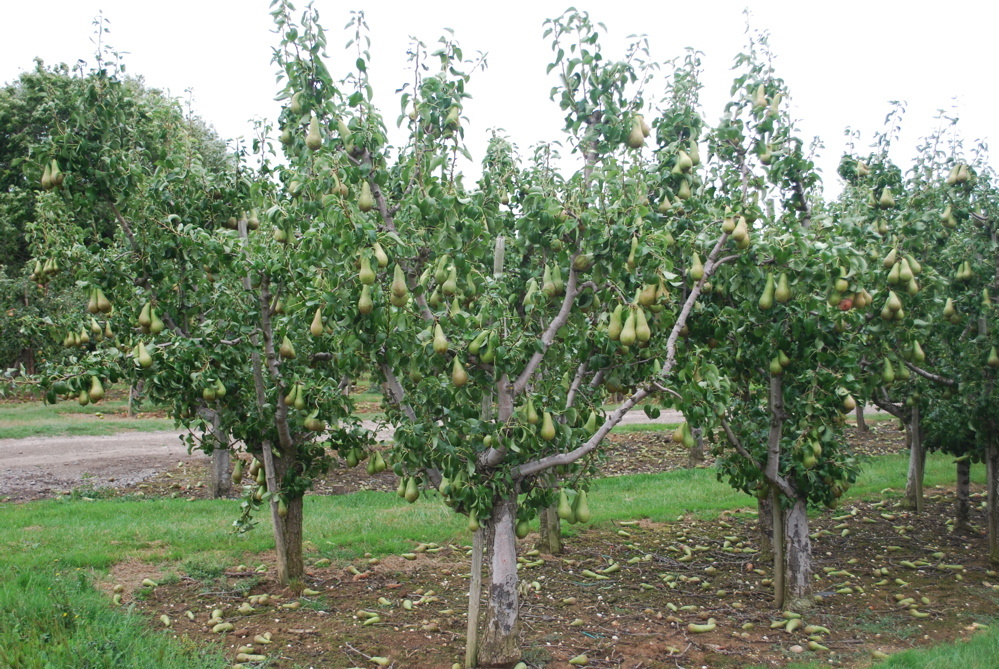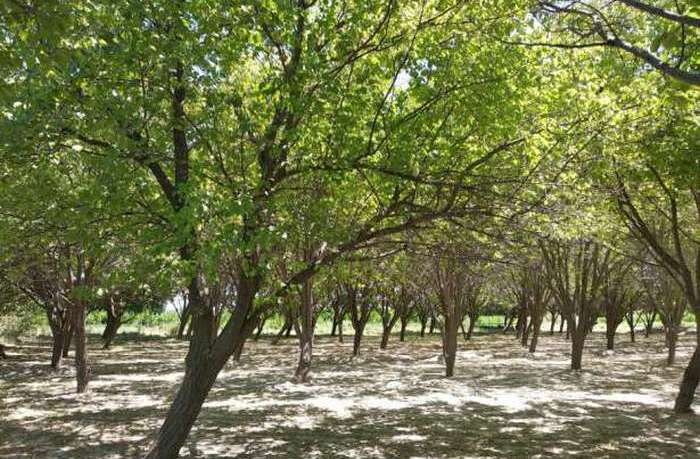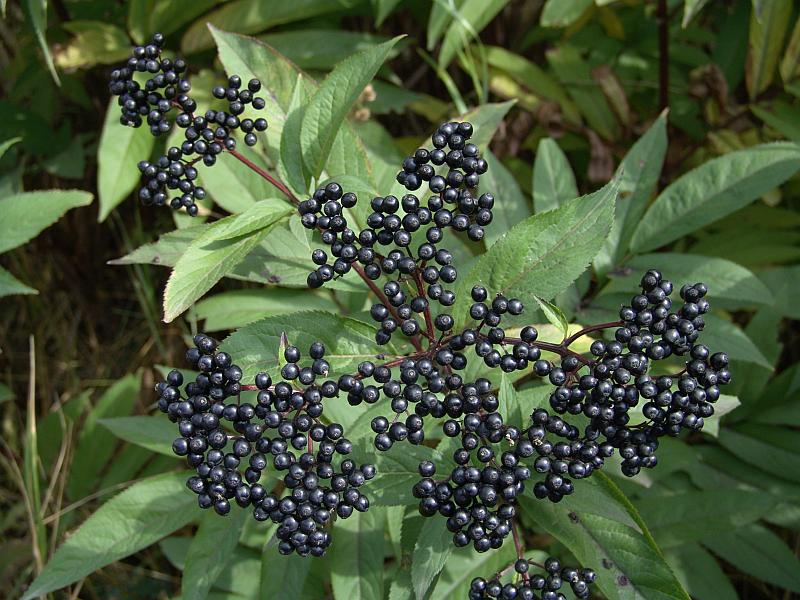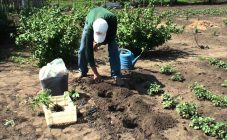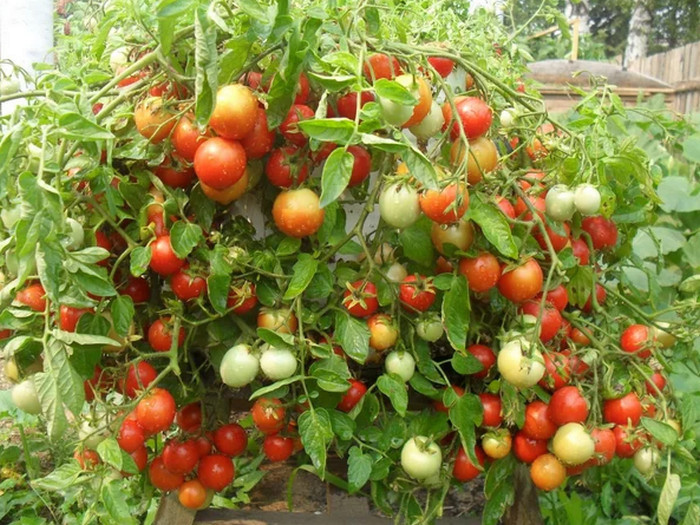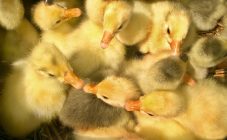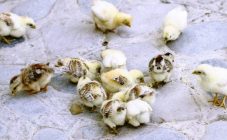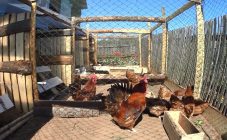Content:
When planning to grow an apple orchard, many are wondering at what distance to plant apple trees from each other. In fact, this is a very important point, because the quality and quantity of the crop will depend on the planting scheme. Observing the correct distance between the apple trees when planting is necessary so that the trees are pollinated on their own. Most of the recent apple varieties cannot self-pollinate.
It should also be remembered that an adult apple tree takes up quite a lot of space, scattering its branches. The root system of the apple tree also loves space, nothing good will happen if the roots are cramped in the ground. Lack of nutrients and elements will certainly affect the yield if the garden is densely planted. Trees should not be in the shade, seedlings should be planted at some distance.
Apple orchard planting scheme
Before planning a planting scheme and calculating the distance between apple trees, you need to assess the terrain: the location of the garden, soil condition, climatic features. The variety and type of trees are also important.
If there is a neighboring plot nearby, you should know that, according to the legislation, tall trees can be planted at a distance of at least three meters from the neighboring fence. If a tree grows too close to a fence, it can cast a shadow on someone else's area, and its roots can harm other plants or buildings (house, shed, gazebo).
Buildings and apple trees should be at a distance of about 5 meters, otherwise the trees will be in the shade. In addition, branches over time can run into the wall.
The place for planting should be chosen light, not shaded, preferably without wind.
Make sure that groundwater does not pass too close to the surface, otherwise it will wash over the roots, leading to stunted growth.
A pit for spring planting is prepared in the fall. For autumn - 2-3 weeks. There is no clear answer as to what time it is best to plant young trees. Every gardener has his own opinion on this matter. You should not rush in the spring - you can plant it not earlier than mid-April. In autumn, you need to be in time before the first frost.
In the southern regions, they prefer to plant trees in the autumn months, in the south, autumn is quite warm. The seedlings planted in autumn will be saturated with rain and snow, and in the spring they will certainly grow well. Trees planted in spring are at risk of dying due to drought.
In central Russia and in the north, abundant rains come along with spring, so there are practically no droughts in the spring, seedlings take root well.
The pit can be round or rectangular. The size of a rectangular hole is approximately 80 * 80 * 80 cm, depending on the volume of the roots - more or less. If the pit is round, it will be 1 m or slightly less in diameter. The depth of the pit is 80 cm.
When they begin to dig a hole, the top layer of the earth (up to 30 cm) is removed, mixed with fertilizer: peat, ash, manure or superphosphate. The soil mixed with fertilizer is poured onto the bottom of the pit.
Autumn rains and melting snow water will moisten the pit and cause the earth to settle.Stones on the bottom of the pit should be laid out only if the earth is clayey. River sand or peat can also be added to clay soil. And if the soil is sandy, you need to add humus or clay.
Usually, one-year and two-year seedlings are used for planting. First of all, a stake is installed in the middle of the pit - it is needed to support and tie a young tree. A tree is tied up two meters away - near the root and crown. Next, you need to inspect the roots - if there are damaged or dried, they are immediately removed. Immediately before planting, the ground is slightly loosened.
Then the seedling is placed in the pit, gently spreading the roots, making sure that they lay down freely. The roots should not twist and break through the ground to the top. After that, the roots are covered with earth and gradually tamp the earth. When the entire hole is covered with earth, you need to tamp the earth well again and make a shallow hole so that the water is retained.
Now you need to water the apple tree.
For one seedling, you need to pour about 3 buckets of water, but not immediately, but gradually, as it is absorbed. The next 2-3 months, the seedling also needs to be watered only with warm water. First, water the apple tree once a week, then once a month.
If the seedling has reached a height of 70 cm, it must be pruned. In annuals, the top is trimmed, and in biennials, the side branches. This is done to form the correct crown.
It is not necessary to feed young seedlings for the first 2-3 years and is even dangerous, their roots are too sensitive and can get burned.
At what distance to plant apple trees of different types
When planting apple trees in spring, you need to keep the distance between trees. About 20-30 years ago, there were only tall varieties of apple trees, they were planted 6 meters from each other. Now gardeners prefer modern varieties on a dwarf rootstock - these are low, compact trees that take up little space, but bring a good harvest.
Tall apple trees should be planted 3-4 meters apart, and rows should be 5-6 meters apart. These include apple trees of the varieties Grushovka, Antonovka, Cinnamon new, Autumn striped. Between trees of medium height, you need to leave 3-3.5 meters and 4.5-5 meters between rows. Medium-sized varieties: Welsey, Lobo, Spartan, Melba.
Weak apple trees are planted every 2-2.5 meters in a row. 4-4.5 meters can be left between the rows.
Landing is performed both in a linear and checkerboard pattern.
If the apple alley grows along a pond or cliff, the distance between trees can be safely reduced to 1.5 / 2 meters. This is due to the fact that trees receive light not only from above, but also from the side.
What trees and plants can you plant apple trees with?
Pear. The distance between pear trees should be about 5-6 meters. It is necessary to plant pear seedlings according to the 2 * 3 m scheme. The distance between the pear and the apple tree should be 4-5 meters. If the varieties are dwarf, the distance is reduced to 3-4 meters.
In the free space between the apple and pear for the first 3 years, you can plant low plants: tomatoes, zucchini, radishes, carrots, eggplants, beets, potatoes, radishes, onions, peppers, beans, spinach. It is not recommended to plant berries.
After planting, young apple and pear trees are watered every 7 days for a month, then every 20 days for another 3-4 months.
Cherry. Cherry trees are recommended to be planted in autumn, while biennial plants can be planted in spring.
If the cherry variety is self-pollinated, you can plant the plants at a distance of 3 meters from each other. If the variety is cross-pollinated (the plant has both male and female flowers), plant at least 4 trees.
Dwarf and semi-dwarf cherries are planted according to the 2 * 2.5 m scheme, tall ones - 2.5 * 3 m.
The distance between the apple and cherry trees should be 10 meters, provided that both trees are short. If the trees are tall, then at least 15 meters. Some varieties of apple trees perfectly coexist with cherries at a distance of 5 meters. Cherry prefers the same soil and growing conditions as the apple tree. However, the apple tree loves coniferous neighbors, and the cherry does not tolerate. Unlike the apple tree, which can grow well in the shade, the cherry tree does not like dark places.
Cherry does not tolerate being close to strawberries, blueberries, tomatoes, peppers, raspberries, black currants, eggplants. It is also not recommended to plant cherries with trees that have a powerful root system (spruce, oak, poplar, linden, pine, birch). But it gets along well with plums, honeysuckle and cherries.
Apricot. The southern fruit does not particularly like its neighbors; the apple tree should be planted at least 10 meters from it. Almost no one likes apricots. This plant must be planted separately from everyone else.
Apricot trees are planted according to the 3 * 5 or 5 * 5 m scheme. The interval between trees is 3-4 meters. The distance from fences or buildings to the apricot is at least 3 meters.
Plum. Like the apple tree, plum loves sunny places, soil without close groundwater. The best planting time is spring.
It is recommended to maintain a distance of 3 meters between medium-sized plums, 4-5 meters between tall ones. Plums are planted according to the scheme 2 * 4.5 m.
The distance between the plum tree and the apple tree must be at least 10 meters. These plants will not become good neighbors. Also, it does not tolerate the plum of the neighborhood with a pear, black currant, raspberry. But black elderberry and maple will get along well with it and even increase the yield.
Many people plant a juniper under an apple tree and near it, believing that this coniferous plant will decorate the garden and will be beneficial. The apple tree lives really well in close proximity to conifers, but junipers - both common and creeping - can infect fruit trees with rust, which is difficult to get rid of. The juniper dries up, turns brown or brightens, and orange and red spots appear on the apple tree, shoots, fruits, leaves fall off, in advanced cases the bark cracks and dries up. But despite all this, the juniper cannot be the cause of mass disease and death of fruit plants.
Features of growing columnar apple trees
Since columnar apple trees have a weak root system and grow close to the ground, they need special preparation. It is advised to dig a hole for such seedlings of a cylindrical shape, 60 cm deep, 80 cm in diameter. They are advised to plant them from late September to mid-October or mid-April. 5-10 days before planting, the soil is fertilized: 50 g of superphosphate and 50 g of potassium per hole.
When planting, columnar apple trees are arranged mainly in rows, keeping a distance between seedlings of about 1 meter (80-120 cm).
The timing and features of planting apple trees depend on many factors - on weather conditions, the location of the site, trees already growing. By observing all the recommended norms, you can achieve an excellent harvest.
